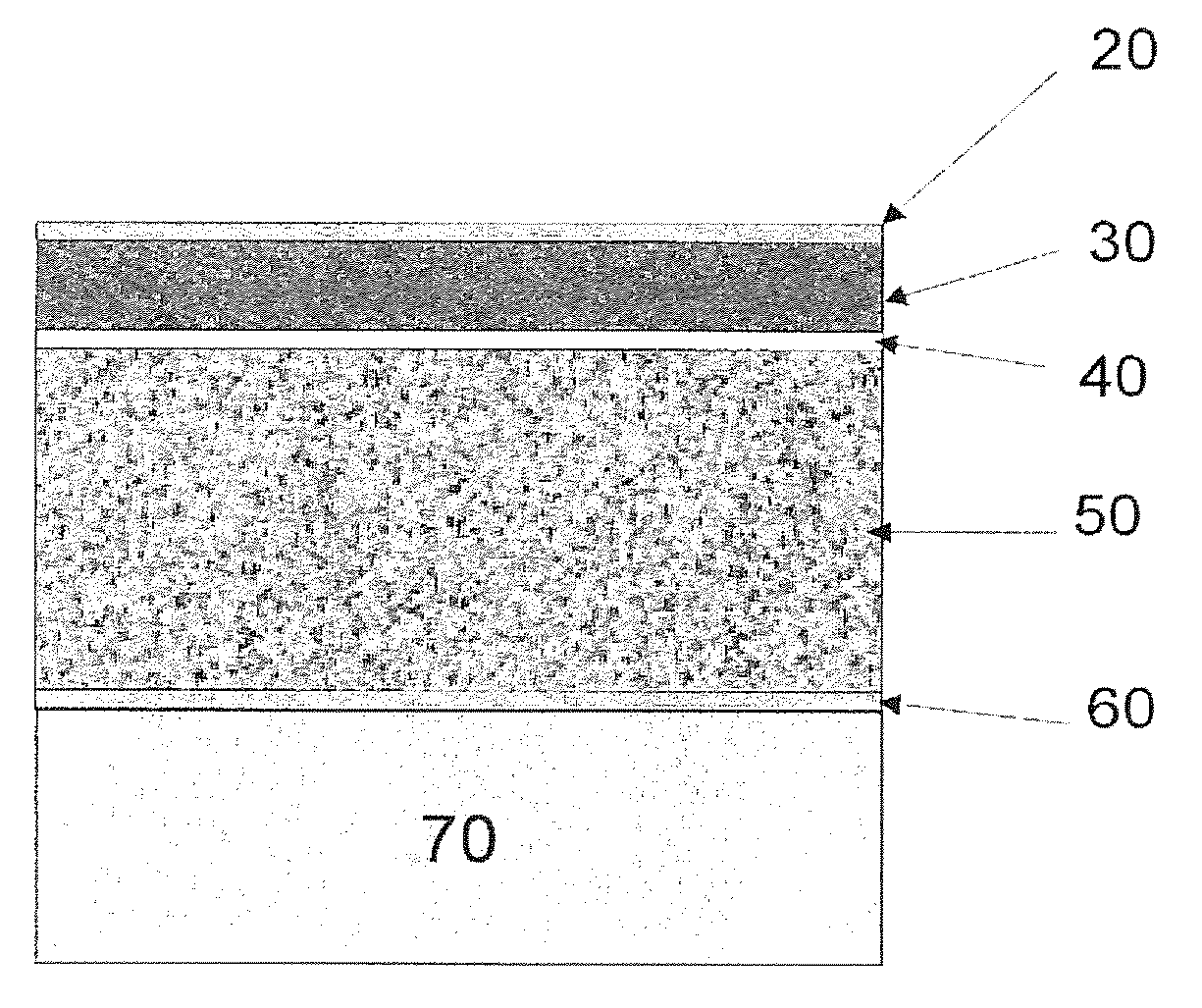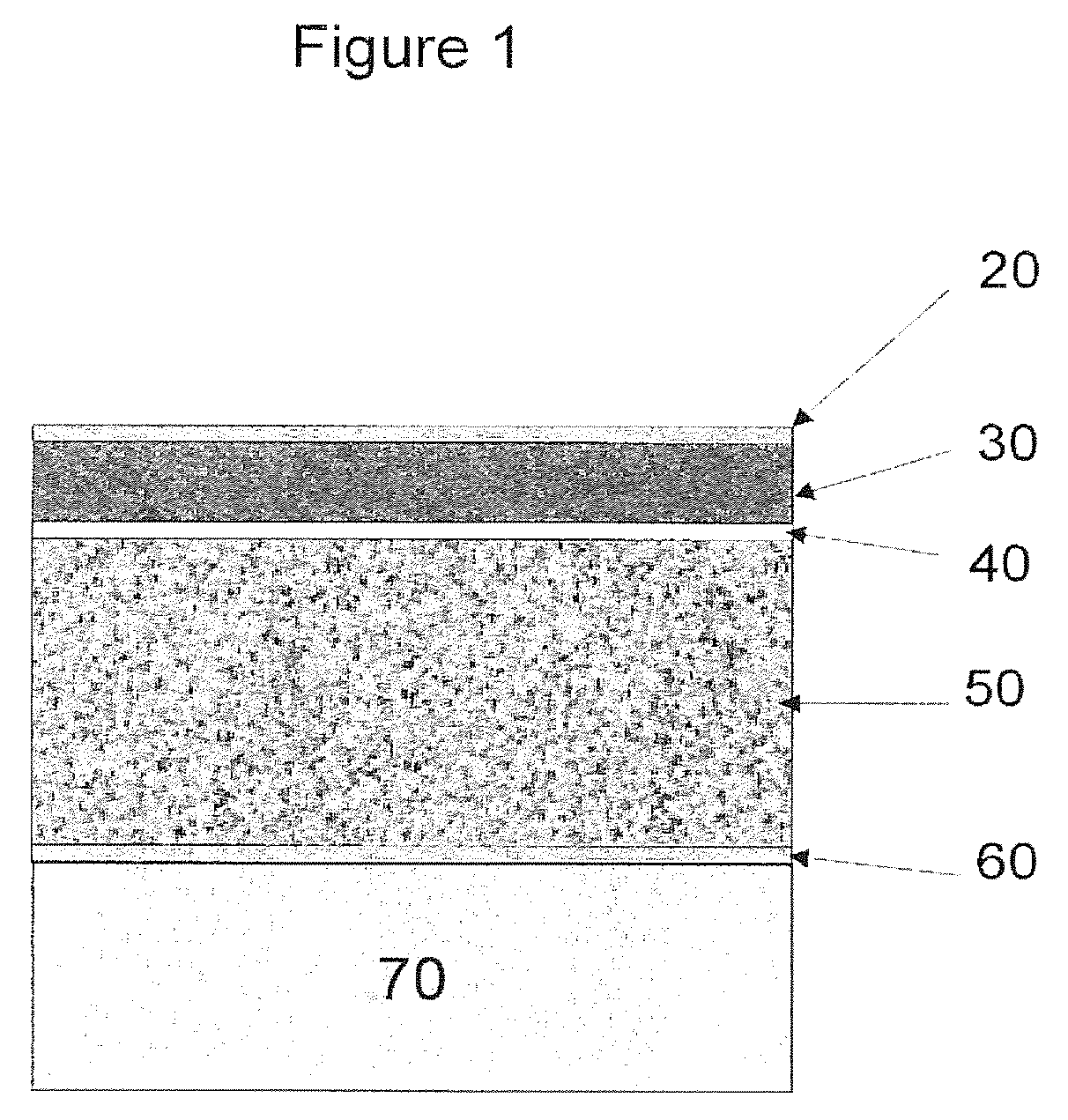Lithium ion battery and method for manufacturing of such battery
a technology of lithium ion batteries and lithium ion batteries, which is applied in the direction of non-aqueous electrolyte cells, electrode collector coatings, electrolyte layer coatings, etc., can solve the problems of high cost/lifetime ratio of lithium-ion and lithium polymer batteries, insufficient charge-discharge cycles that can be experienced, and thin-film lithium batteries that have yet to find widespread acceptance as energy storage devices
- Summary
- Abstract
- Description
- Claims
- Application Information
AI Technical Summary
Benefits of technology
Problems solved by technology
Method used
Image
Examples
Embodiment Construction
[0025]In thin-film lithium batteries where the cathodes are typically ˜1 micron in thickness, it is possible to de-intercalate and re-intercalate reversibly ˜60% of the lithium ions contained in a thin-film LiCoO2 cathode such that little or no degradation in capacity occurs during charge-discharge cycling—thin-film lithium batteries have been reported to survive over 100,000 charge-discharge cycles under laboratory conditions. For thicker cathodes, it is difficult to access such a high fraction of the lithium content in this manner as the diffusion lengths involved become quite large for solid-state diffusion at ambient temperatures.
[0026]In lithium-ion batteries, the cathodes are fabricated to be porous: they soak up the liquid electrolyte which is then in intimate contact with the grains of the active cathode material, thus most long range lithium ion diffusion in the cathode of a lithium-ion battery occurs through the liquid phase. Nevertheless, solid-state diffusion of lithium ...
PUM
| Property | Measurement | Unit |
|---|---|---|
| thickness | aaaaa | aaaaa |
| thick | aaaaa | aaaaa |
| density | aaaaa | aaaaa |
Abstract
Description
Claims
Application Information
 Login to View More
Login to View More - R&D
- Intellectual Property
- Life Sciences
- Materials
- Tech Scout
- Unparalleled Data Quality
- Higher Quality Content
- 60% Fewer Hallucinations
Browse by: Latest US Patents, China's latest patents, Technical Efficacy Thesaurus, Application Domain, Technology Topic, Popular Technical Reports.
© 2025 PatSnap. All rights reserved.Legal|Privacy policy|Modern Slavery Act Transparency Statement|Sitemap|About US| Contact US: help@patsnap.com



